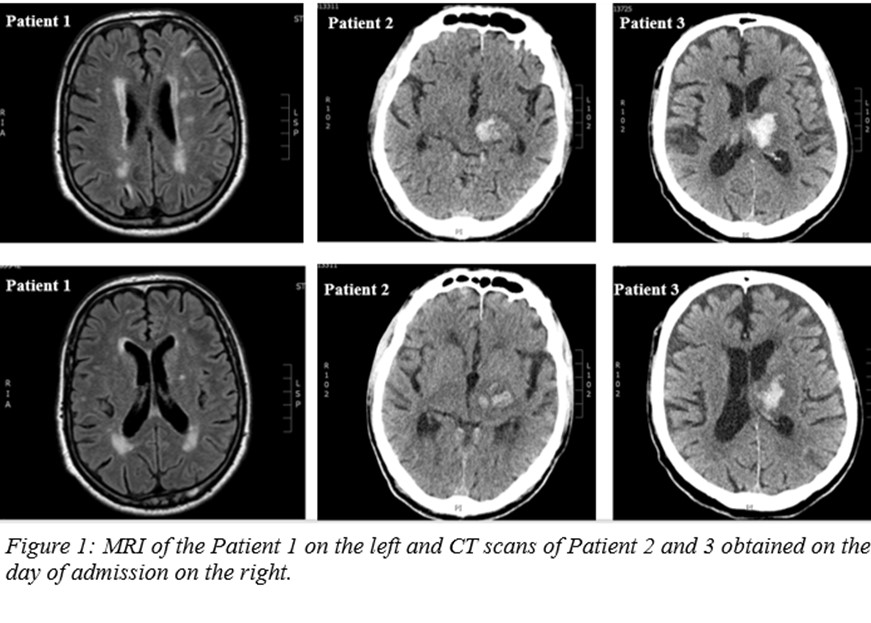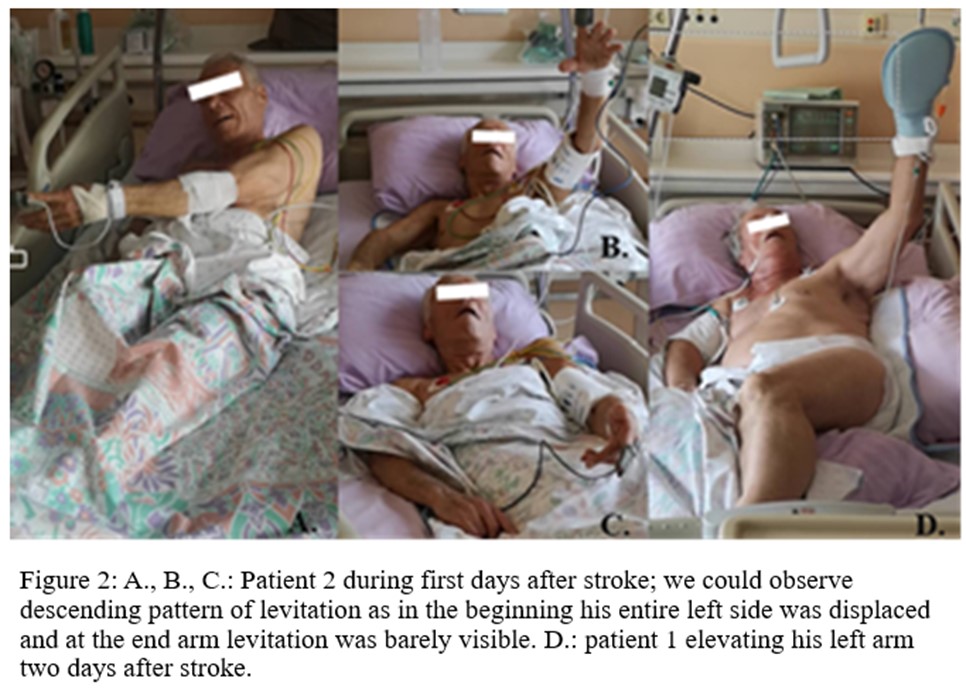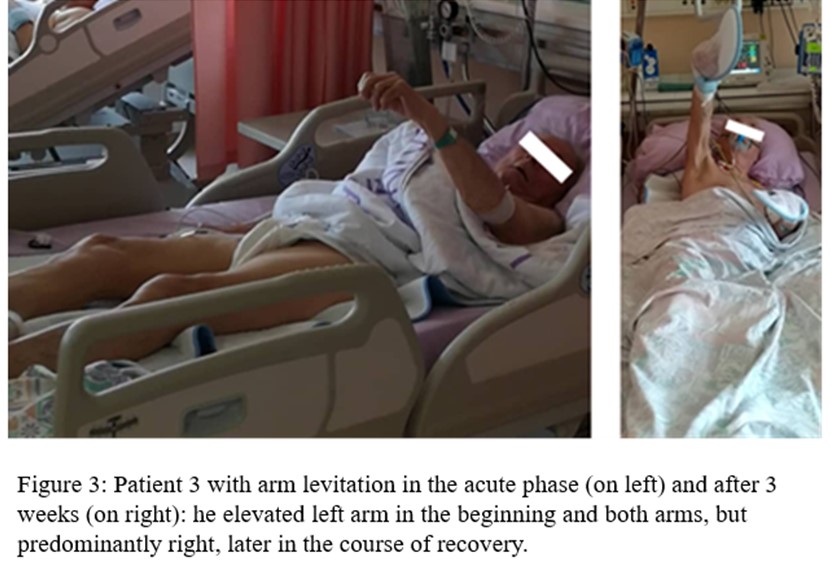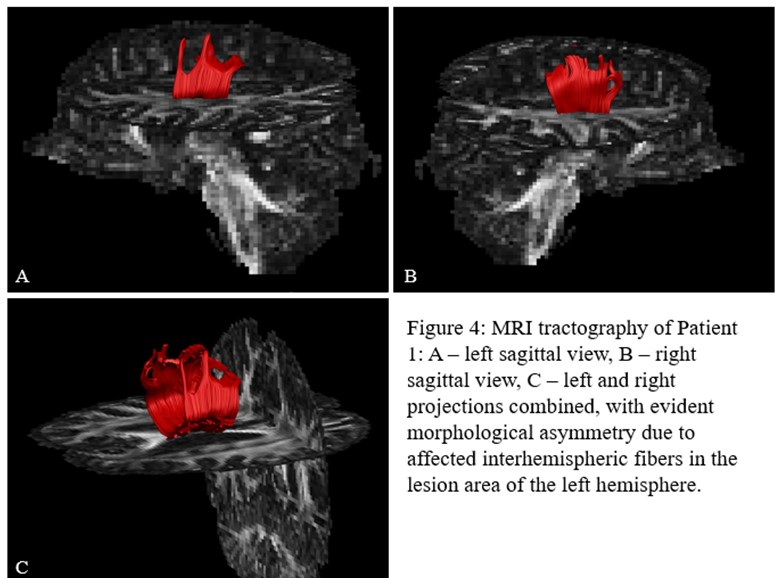Session Information
Date: Wednesday, September 25, 2019
Session Title: Phenomenology and Clinical Assessment of Movement Disorders
Session Time: 1:15pm-2:45pm
Location: Les Muses Terrace, Level 3
Objective: We present three patients with left hemispheric stroke and spontaneous ipsilesional arm levitation (IAL), a phenomenon not hitherto described.
Background: Spontaneous arm levitation (AL) is a rare phenomenon consisting of spontaneous elevation of the upper limb. AL has been reported in neurodegenerative disorders or contralaterally to vascular lesions.
Method: Patients were examined and video recorded. One patient underwent diffusion MRI and transcranial magnetic stimulation to measure ipsilateral cortical silent period (iCSP), a parameter of interhemispheric inhibition (IHI).
Results: Patient 1 had ischemic stroke in the left frontal cortex, while Patients 2 and 3 had deep cerebral hemorrhage affecting left thalamus [figure1] . All three patients showed spontaneous IAL, noticed already on the first day of admission, and moderate to severe contralateral hemiparesis. IAL consisted of elevation of the extended left arm, with hand sometimes forming a first [figure2, 3] . The abnormal position could last for minutes and was mostly present when patients were drowsy, but not asleep. All patients were able to bring the arm down on request. In Patients 1 and 2, IAL ceased after few days, while in Patient 3 it continued for three weeks. In patient 1, iCSP over the left hemisphere was absent in the acute phase. At 3 months follow-up iCSP was shorter on the left compared to the right hemisphere, suggesting impaired IHI from the left to the right motor cortex. In the same patient, MRI tractography revealed morphological asymmetry due to affected interhemispheric fibers in the lesion area of the left hemisphere [figure4] .
Conclusion: Novel observation is that AL may occur ipsilaterally to the hemispheric lesion. Our hypothesis is that IAL results from the functional disinhibition of the non-lesional hemisphere, due to decreased IHI from the lesional to the non-lesional hemisphere. The proposed mechanism may be plausible for frontal lobe strokes involving motor areas and also for thalamic strokes. Thalamus sends massive excitatory projections to motor and sensory cortices, and impairment of these projections may affect motor-motor and parieto-motor IHI, respectively. Loss of interhemispheric equilibrium is disadvantageous for stroke recovery. The recognition of IAL may point toward impaired IHI in acute phase of stroke, eventually leading to interventions that are able to restore interhemispheric balance.
To cite this abstract in AMA style:
M. Klarendic, N. Prezelj, R. Berlot, V. Zgonc, M. Kojovic. Ipsilesional arm levitation after left hemispheric stroke: a case series [abstract]. Mov Disord. 2019; 34 (suppl 2). https://www.mdsabstracts.org/abstract/ipsilesional-arm-levitation-after-left-hemispheric-stroke-a-case-series/. Accessed December 28, 2025.« Back to 2019 International Congress
MDS Abstracts - https://www.mdsabstracts.org/abstract/ipsilesional-arm-levitation-after-left-hemispheric-stroke-a-case-series/




